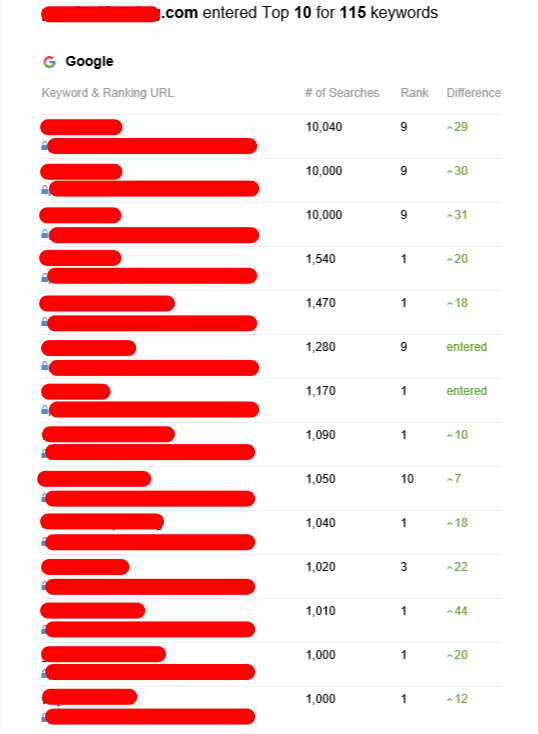best sites for tiered link building that have different levels of importance are a crucial tool in any SEO campaign. They can help you build a strong backlink profile without attracting search engine penalties. But, it's important to understand how to use them effectively.
Tier two backlinks are typically from moderately authoritative sources such as blogs, directories, and article networks. At this point quality and relevance are put aside to focus on quantity.
First Tier
Tiered link development is an SEO strategy that helps to create a high-quality profile of backlinks for your website. It mimics what happens when authoritative content is spread across the internet. This is accomplished through the network or pages that endorse the main source and then redirecting their link juice to a promoted page. This technique lets you create a huge number of links without compromising the quality of the content on your website.
Tier 1 links are the top quality links you can get from a tiered link service, and they should only be posted on reputable websites that are relevant to your field. They should also have an excellent domain authority. This is the most important component of your tiered link building campaign, and it could be difficult to obtain. Utilize tools like Moz, Ahrefs or Loganix DA Checker to determine the domain authority of your Tier 1 donors.
The next step in tiered link construction is to build Tier 2. These are links that are less powerful than Tier 1, but they still have the potential to boost your search engine ranking. You can create Tier 2 links using blog comments, forum postings and Wikis. This method should only be used if it's not against the rules. Also, avoid automating.
Second Tier
It is possible to enhance the quality and quantity of your backlinks profile using the"tier" system. This won't result in penalties from search engines. However, it can be a major time consuming process. Tiered link building strategies require linking to a variety of pages on a website, which requires an inordinate amount of work. It can also take months to see results from an elongated link-building campaign. This is because PageRank can take several months to reach the website of your choice.
The first tier must be made up of dofollow, high-quality links coming from relevant sites that have an excellent Domain Authority (DA). The value of a tier backlink is in this the first tier. To confirm the domain authority of your tier one links it is crucial to use a trusted domain checker like Moz, Ahrefs or SEMrush.
For the second level for the second tier, you will need to obtain links from third-party sources closely related to your topic. This can include social media profiles, non-spammed blogs, and Q&A sites. networks. Some SEO practitioners use automated tools for building links to achieve this goal.
It is crucial to remember that the links you acquire for your tier two should be natural-looking. According to Google's Webmaster Guidelines, if a link appears artificial it may be considered spam and penalized accordingly. This could result in dramatic drops in rankings or the issuance of manual action by Google's human reviewers.
Third Tier
Link building in tiers is a fantastic method of increasing your site's authority. This allows you to maximize the benefits of low-quality links while reducing the chance of being penalized. This method also increases the effectiveness of your SEO efforts through the ability to acquire links at a lower cost. However tiered link building isn't without its flaws. It could be risky if you choose to use too many low-quality backlinks and if the links are not contextually relevant to your site. It is also essential to take care not to go overboard with the number of tiered hyperlinks, because Google will notice and may penalize your site.
Tier 2 links tend to be less reliable than tier 1 links and are designed to increase the domain authority for the backlinks that were originally created. These links can be obtained via blog comments, forums, wikis and other Web 2.0 sources. This kind of backlinks are also called "pumping tiers." However it is important to ensure that your second-tier links are of a high-quality and relevant.
Google may make a manual decision if you use too many automated tools to build Tier 3 link building. Many optimizers use GSA, Xrumer, and ZennoPoster to automate their Tier 3 link creation. Tier 3 links need to be crafted from credible websites and reputable niches. If they are not, Google will detect them as part of a link scheme and may punish the site.

Fourth Tier
Tiered link building can be utilized to boost the authority of a site and increase its SEO rank. But, it's crucial to apply this strategy with care so that you don't break Google's guidelines. For instance, if build tier three backlinks on sites that are not quality or spammy, this can hurt your site and cause it to lose rankings. If you're getting links in a fast pace, Google may also penalize your website.
To avoid this, concentrate on creating a wide range of tier-one backlinks from trustworthy sources. You can include links from the first tier in guest posts, roundups of links, and article directories. You can also utilize Tier 2 links to improve your first-tier backlinks. This is because tier two backlinks are typically higher in quality than tier three links.
It's also important to remember that building tiered links requires much effort and money. For example, you'll need to pay for content writers as well as automation tools. Additionally, you'll need to track all of the different tiers in order to ensure that your campaign is consistent and efficient. If you're not able to commit the time and money needed to implement this strategy, it's recommended to outsource it to an agency that is specialized in tiered link development.
